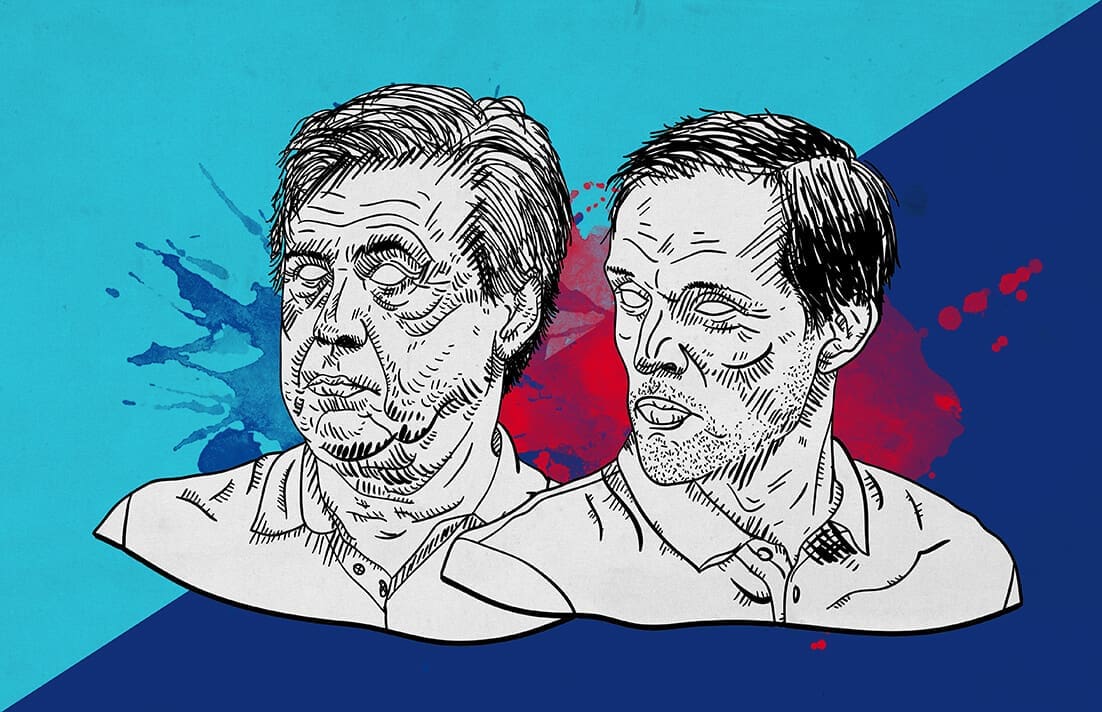This match analysis was first featured on our dedicated Serie A site, serieaanalysis.com.
In a week filled with controversial leaks, Group C’s drama continued after Liverpool unexpectedly lost against Red Star Belgrade 2-0, putting themselves in a difficult situation and making the game between Napoli and PSG less of a tie-breaker. Although the French side is yet to lose a game in Ligue 1, their performances have been rather underwhelming and the Champions League displays have highlighted their troubles as to finding the right alchemies on the field. Their home fixture against the Neapolitans ended in a fortunate draw given the circumstances, however, the second half showings (or rather, up to their 1-1 goal), following Tuchel’s switch to a back three, beckoned progress. The Parisians were able to counter-press effectively and keep a high line which, thanks to the added man on the backline, allowed the defenders to step out more aggressively to make up for the midfield’s lacklustre cover.
The away side thus opted for the riskier, but at the same time, arguably best eleven for the occasion.
Instead, Ancelotti fielded his custom set of players for these big Champions League matches.

PSG’s build-up issues
During build-up, however, PSG’s issues persisted, in spite of their numerical superiority in a 3-1 (+1 with Draxler dropping onto the second line from a higher positioning in the left half-space) against Napoli front two. Tuchel’s side’s position shape resembled a 3-5-1-1/3-4-2-1, as Di Maria’s role in possession remained rather unknown, mainly due to little involvement in the team’s actions due to PSG’s heavy left-side orientation.
Even though the build-up lacked progressiveness and the circulation was mainly U-shaped, “Les Parisiens” were gradually able to gain space and bring the ball up due to the large distances Napoli’s first line had to cover to press the wide centre-backs from their central starting position. Ancelotti’s side settled into a 4-4-2-0 mid-block wherein Insigne used his cover-shadow to prevent passes into Verratti, whilst Mertens did the same with Draxler, marking the German when he dropped deep to aid. Draxler’s dropping movements were in most cases, redundant, though, and didn’t create any advantages; they meant that PSG had one less player behind the opposition’s lines and unnecessarily committed five players against two.

PSG’s redundant 5v2 overload in the build-up
PSG’s initial struggles at building up play and progressing the ball to the forwards made them play an excessive amount of long balls that Napoli easily dealt with and recovered possession from. Due to the offensive nature of the midfield and its inadequacy and passivity when defending positionally, PSG had to absolutely avoid phases of deep defending, and these lost balls did their plan all but good, especially since they lacked numbers to counter-press the second balls. The centre-backs’ only way past the centre-backs was through the wing-backs, who provided width high up the pitch, Meunier in particular, who had space to receive in due to Napoli’s focus on their right-side and horizontally compact block. However, once the Belgian received the ball, he lacked passing options and usually had to play the ball back to the defenders. With Fabian generally focusing on the ball, Di Maria was able to evade the Spaniard’s cover shadow and receive wide, though, creating 2v1 situations with Meunier against Mario Rui.
Moreover, with a quicker circulation, PSG would have been able to exploit the half-backs’ positional superiority and, had they carried the ball, created decisional-crises, enticed Napoli’s second line out of position and consequently opening a passing lane and freeing a player between the lines.
Instead, PSG relied on Neymar’s dribbling ability to carry the ball from midfield into higher areas and create any sort of danger. Whilst Tuchel’s plan since the start of the season has revolved around individual movements to free Neymar in the left half-space, thus creating the best conditions for him to dribble, against Napoli (and in many of PSG’s games this season) it seemed more like a use of the Brazilian as a stopgap, to make up for structural issues, in a very similar way to Messi with Argentina.
PSG’s pressing
PSG has often been exposed due to their passivity during pressing this season, especially from the front two, Neymar and Mbappé, who’ve had a subpar intensity off the ball which has caused all sorts of problems for the collective: from a lack of coverage of wide areas to disconnected lines and vertical compactness issues. Although the intensity from the first line is still rather low, their positioning has improved, almost transpiring commitment and discipline from the forwards.
PSG’s improved man-oriented high-press forced Napoli into long-balls due to a lack of passing options. Napoli’s centre-backs’ target would usually be one of the forwards’ runs into depth, looking to push the opposition deep and stretch their lines, creating space for Fabian and the other attacker; however, the back three dealt with the aerial duels and balls into depth very well, showing a good reading of the game.
Neymar and Mbappé pressed the centre-backs, Di Maria marked Hamsik, Draxler stepped out on Allan and the wing-backs pressed the full-backs.

PSG’s man-oriented press
Meunier committing on Mario Rui, though, freed Fabian Ruiz (who tucked inside from his left winger position out of possession) behind him in the right half-space, so the Belgian had to time his runs according to Verratti’s position and consequent access to the Spanish midfielder, in order not to leave a player free between the lines.

Fabian Ruiz receives between the lines
The back three defended in numerical superiority against Insigne and Mertens, although the Neapolitans were able to create some advantages despite the inferiority by drawing Marquinhos wide through Insigne’s drifting movements and attacking the opened channel with Fabian Ruiz or Mario Rui. Furthermore, Callejon’s high position pushed Bernat deeper, allowing Maksimovic to carry the ball up whenever Napoli successfully switched play quickly to the weak side.
Napoli’s resurgence
The second half saw Napoli take control of the game as PSG’s tempo dropped off in a similar way to the home fixture after their 1-1 goal. Most of the credit must go to Napoli, though, who were able to recover possession more often and build up attacks using the entire width of the pitch as the wingers pinned the wing-backs deep and the full-backs pushed up. Here, the visitor’s flaws in positional defending were exposed, as the numerical inferiority in wide areas due to Neymar and Mbappé’s high positioning and reluctance to trackback forced the midfield line to shift aggressively to the ball-side, exposing the ball-far flank.

Callejon pins Bernat, which allows Maksimovic to receive unmarked
In the second half, Napoli created 1.6 xG, exceeding PSG’s total Expected Goals by 0.8, and ending the match with 1.94.
Napoli’s continuous switches of play and allowed them to manipulate Tuchel’s side’s structure, by drawing them to one side to subsequently play a switch to the man providing width on the opposite flank, going close to scoring in multiple situations through the classic Insigne-Callejon connection.

Conclusion
Napoli showed their incredible mental strength yet again, deservedly scoring the 1-1 goal following a (caused, due to the amount of pressure they had been putting on PSG) Thiago Silva mistake that led to a penalty. While it’s still early days for Tuchel, it’s clear that a lot isn’t working, and if PSG is to compete for the Champions League this season, the German manager must solve his team’s multiple problems in possession as soon as possible.
With Napoli and Liverpool sitting at six points each, and PSG just behind with five, the group is shaping up to be even more interesting than anyone could have imagined at the start.






Comments